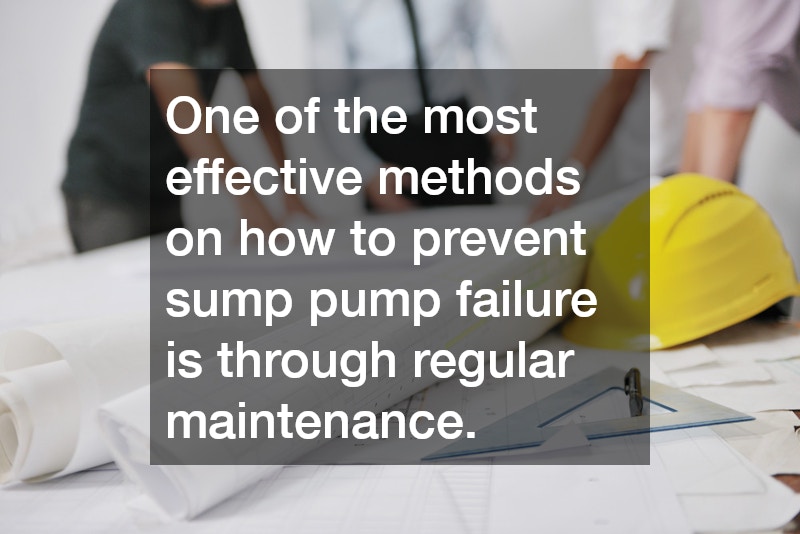
Sump pumps serve as a critical line of defense against basement flooding and water damage in homes prone to high groundwater levels or frequent heavy rainfall. These devices work by collecting excess water in a sump basin and pumping it away from your property to prevent structural damage and mold growth. Understanding the indispensability of sump pumps is the first step in ensuring they function optimally and remain reliable.
The failure of a sump pump can have dire consequences, leading to extensive water damage, increased humidity levels, and costly repairs. Homeowners invest in sump pumps to safeguard their properties, but it’s crucial to acknowledge the risks involved when these systems fail.
By taking proactive measures, the nightmare of flooding and associated expenses can be avoided.
A better understanding of how sump pumps operate helps you appreciate their key role in your home’s water management system. Regular maintenance and vigilance can go a long way in preventing sump pump failure. Implementing preventive strategies will ensure your sump pump remains a faithful guardian against water intrusion.
Routine Maintenance: A Key Factor
One of the most effective methods on how to prevent sump pump failure is through regular maintenance. Routine checks ensure that all components function correctly, which greatly reduces the chances of a breakdown. Maintenance tasks include checking the pump’s power source, inspecting the discharge line, and removing any debris blocking the system.
A well-maintained sump pump is less likely to experience unexpected failures during critical moments, particularly during heavy rains. It’s advisable to schedule a maintenance routine, ideally every few months, to detect potential issues early. This preventive approach not only prolongs the pump’s lifespan but also ensures peace of mind during inclement weather.
Educating yourself and perhaps enlisting the services of a professional technician for thorough inspections can make a significant difference. Technicians can provide insights and uncover hidden faults that might otherwise be overlooked. Regular upkeep is an investment in your home’s safety and security, effectively mitigating flood risks.
Power Supply Considerations
The reliability of a sump pump is heavily dependent on its power source, making it essential to consider backup power options. Power outages are common during storms, which is often when sump pumps are most needed. Installing a backup battery system or generator will ensure continuous operation during blackouts, preventing sump pump failure.
Regularly test your power backup system to confirm its readiness in emergency situations. The combination of a primary sump pump and a battery backup provides an extra layer of protection for your home. Additional power sources not only bolster your sump pump’s functionality but also offer assurance when you need it most.
Moreover, homeowners should ensure that the pump’s power connection is secure and free from any water exposure risks. Consider installing a Ground Fault Circuit Interrupter (GFCI) outlet to protect against electrical issues. Addressing power considerations is pivotal in keeping your sump pump running smoothly at all times.
Discharge Line Configuration
The effectiveness of a sump pump is largely contingent on a properly maintained discharge line, which carries water away from your home’s foundation. Obstructions, such as algae, dirt, or ice, can block the line and cause the system to back up, leading to potential failures. Regularly inspecting and cleaning the discharge line is an essential prevention tactic.
Properly configuring discharge lines by adding protectors or filters can prevent debris buildup. During colder months, ensure that the line is angled to allow for effective drainage and avoid freezing-related blockages. Simple adjustments and precautions can enhance the reliability of your sump pump significantly.
Ensure that the discharge line directs water far from your house to prevent the possibility of recycling water back into your basement. Having an adequate slope and distance will enable efficient water removal and reduce the likelihood of saturation near your foundation. By focusing on the discharge line, you can safeguard against unnecessary failures due to clogs or blockages.
Choosing the Right Sump Pump
Selecting the appropriate sump pump for your home is an essential factor in preventing failures. Factors such as pump capacity, material, and type (submersible or pedestal) play a role in determining the best fit for your needs. A sump pump that is too small may become overwhelmed during high water events, while a larger pump will deliver optimal performance.
Submersible pumps are generally better for homeowners seeking quiet operation and minimal visibility, while pedestal pumps tend to be more cost-effective with easy access for repairs. Evaluating these options in relation to your priorities is crucial for long-term satisfaction and effectiveness. Being informed allows homeowners to make smart decisions in their pumping system investments.
Consider consulting with a professional for guidance on choosing the right sump pump based on your property’s specific requirements. With expert advice, you can ensure the selected pump caters to all your preventative needs while optimizing its safety functions. A carefully chosen sump pump is a worthwhile investment in defending your property against flooding risks.
.
